<< Previous | Displaying results 3926-3950 of 6772 for "" | Next >>
Explore a timeline of key events during 1943 in the history of Nazi Germany, World War II, and the Holocaust.
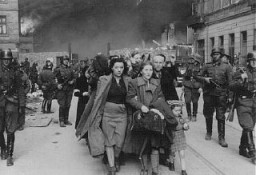
Explore a timeline of key events during 1944 in the history of Nazi Germany, World War II, and the Holocaust.
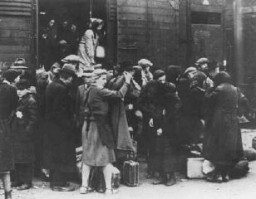
Explore a timeline of key events during 1945 in the history of Nazi Germany, World War II, the Holocaust, and liberation and the aftermath of the Holocaust.
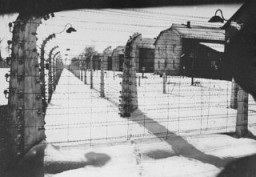
Explore a timeline of key events during 1946-1948. Learn about the aftermath of the Holocaust and the obstacles survivors faced.
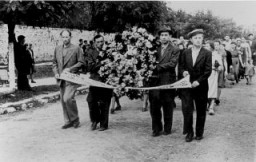
Hermann Göring held many positions of power and leadership within the Nazi state. Learn about key dates in the life of Hermann Göring.
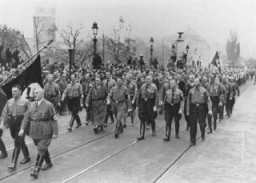
Ravensbrück was the largest concentration camp for women in the German Reich. Learn about the last months of the Ravensbrück camp and the postwar trials of camp staff.
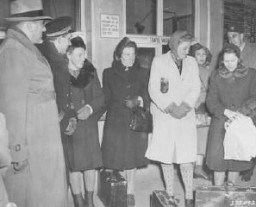
Key dates in the history of the Sachsenhausen camp in the Nazi camp system, from its establishment in 1936 to the postwar trial of camp staff in 1947.
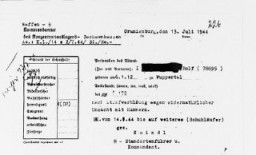
Learn about conditions in the Sachsenhausen concentration camp system and the treatment of prisoners there, including medical experiments and forced labor.
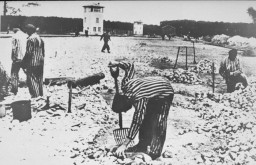
Learn about the death march of prisoners from the Sachsenhausen camp, liberation of the remaining prisoners, and postwar trials of camp staff.

Explore a timeline of the history of the Flossenbürg camp in the Nazi camp system from its establishment in 1938 until liberation in 1945.
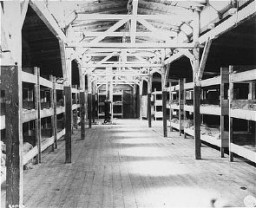
Learn about the sections of the Bergen-Belsen camp complex during WWII and the Holocaust until the camp's liberation by British forces in April 1945.
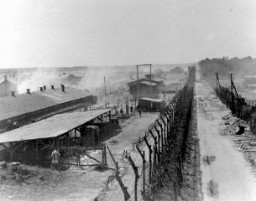
Nicholas Winton organized a rescue operation that brought hundreds of children, mostly Jewish, from Czechoslovakia to safety in Great Britain before the outbreak of WWII.

On December 17, 1944, one day after the beginning of the Battle of the Bulge, a Waffen SS unit captured and murdered 84 US soldiers. This atrocity is known as the “Malmedy Massacre.”
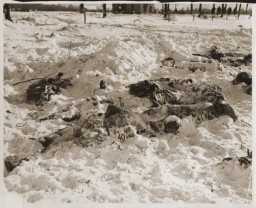
When WWII began, most Americans wanted the US to stay isolated from the war. From December 1941, the majority rallied in support of intervention to defeat the Axis powers.
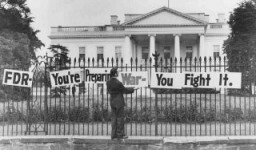
In 1946-48, the British government intercepted tens of thousands of Holocaust survivors seeking to reach Palestine and held them in detention camps on Cyprus.
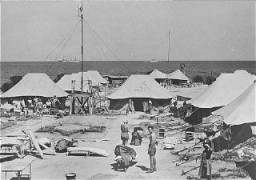
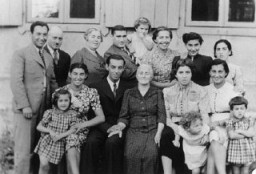
Learn more about the forcible relocation of some 120,000 people of Japanese descent living in the US to “relocation centers.”
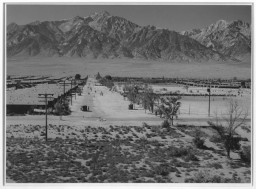
US radio and TV journalist Edward R. Murrow reported live from London during the Blitz; he also broadcast the first eyewitness account of the liberation of Buchenwald.
Learn about US journalists, including Edward Murrow, William Shirer, and Dorothy Thompson, and their impact during the Nazi rise to power and WWII .
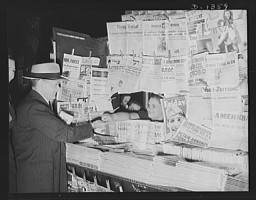
American journalist, foreign correspondent, author, and pioneer radio broadcaster William L. Shirer was one of the key observers and chroniclers of the Nazi regime.
Many German businesses were involved in the policies of the Third Reich. Learn about Topf and Sons, which sold ovens to the SS for major concentration camps in Germany.
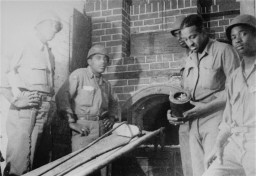
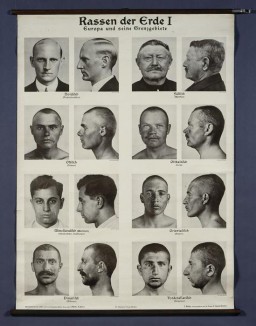
Sketch from the scrapbook of Donald Coster presented to him during his inspection of the internment camp in Djelfa. The page is entitled, "Gulliver's travels to Djelfa." Djelfa, Algeria, ca. 1942.
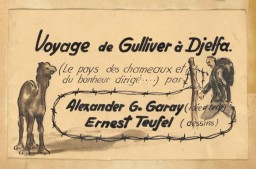
Sketch from the scrapbook of Donald Coster presented to him during his inspection of the internment camp in Djelfa. The page is entitled, "All roads don't lead to Rome." Djelfa, Algeria, ca. 1941.

German propaganda leaflet targeting African American servicemen, November 1944. The leaflets falsely suggested that African Americans would receive better treatment by the German military and encouraged them to surrender to German troops.
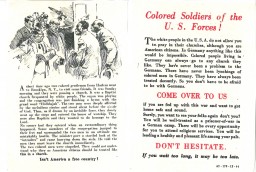
We would like to thank Crown Family Philanthropies, Abe and Ida Cooper Foundation, the Claims Conference, EVZ, and BMF for supporting the ongoing work to create content and resources for the Holocaust Encyclopedia. View the list of donor acknowledgement.